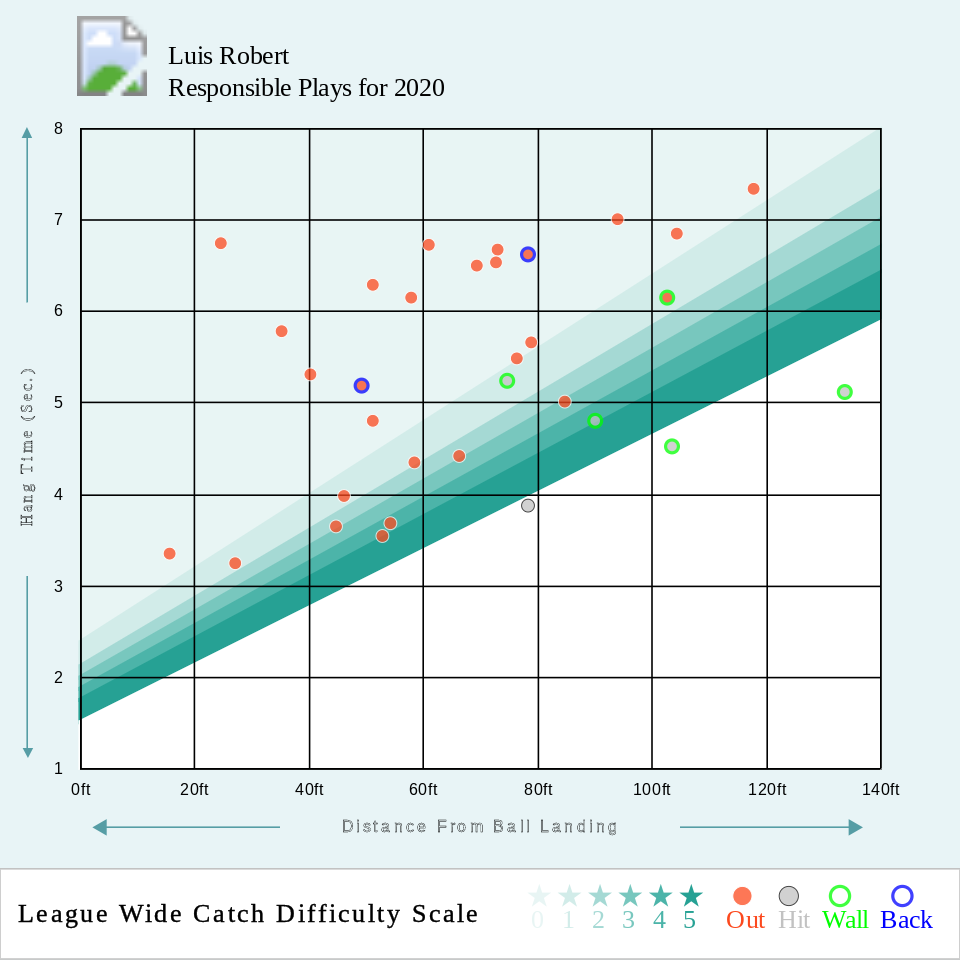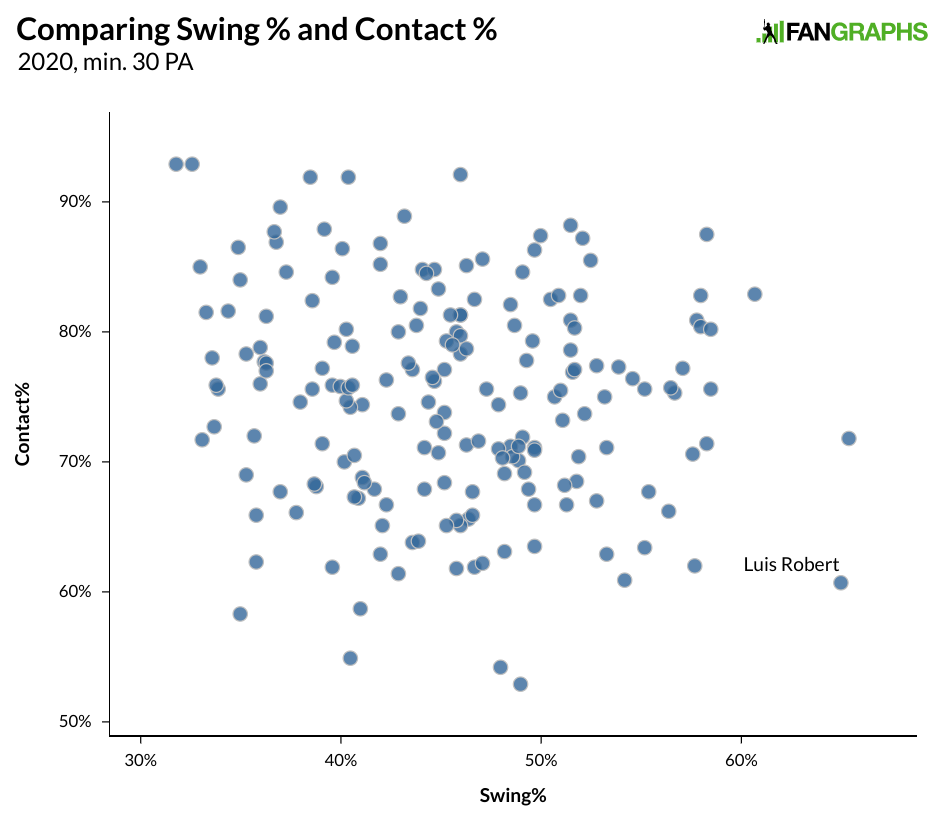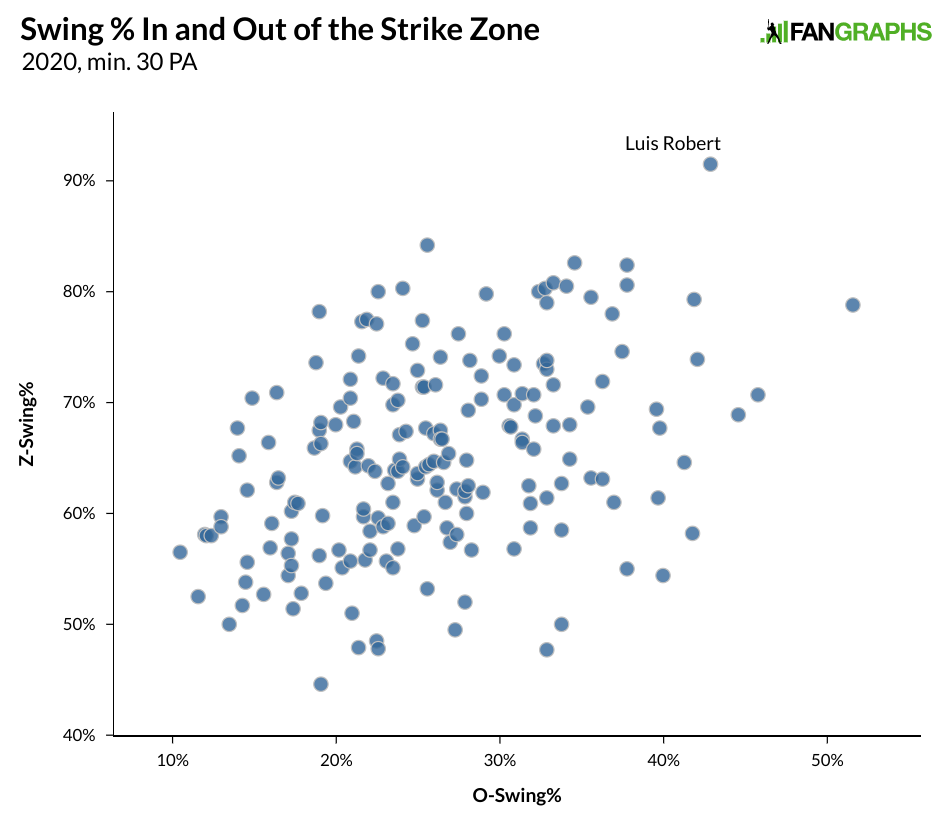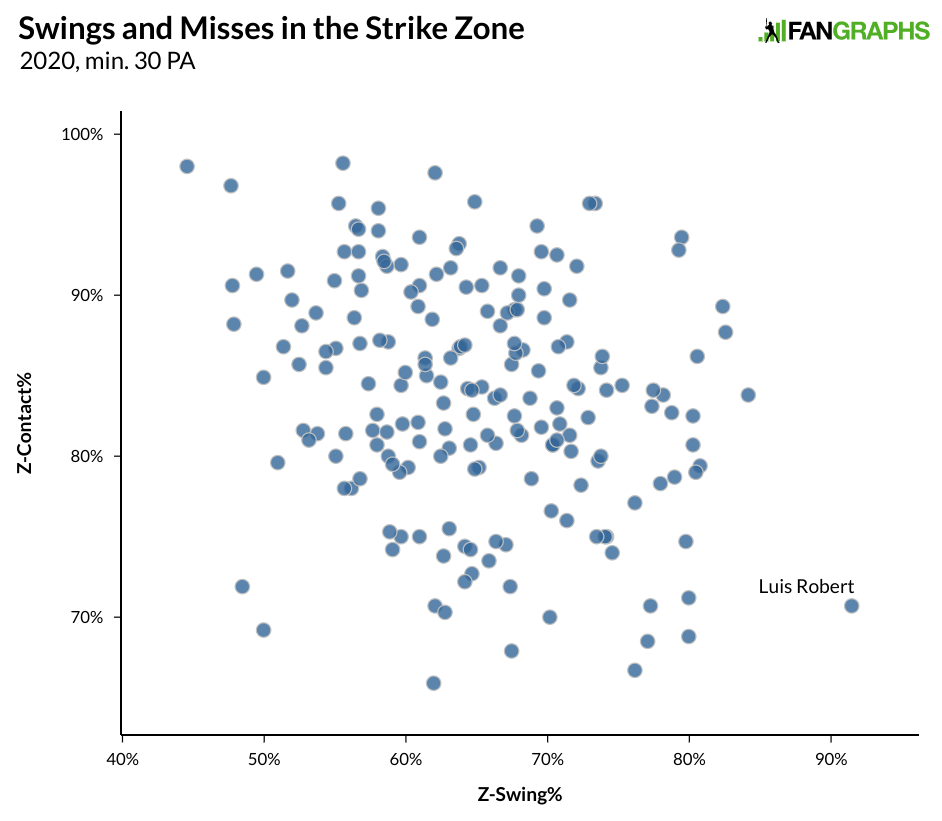Luis Robert Is Doing a Lot of Things
Heading into 2019, opinions differed about how much of Luis Robert’s potential would manifest in games. Those opinions got considerably more uniform after a breakout season that saw Robert tap into his power. One of the top prospects heading into 2020 (he ranked seventh overall on our Top 100), Robert has helped a surging White Sox club filled with young talent get a good jump on the season. His .354/.415/.542 batting line has been good for a 177 wRC+, and he’s checking off every box on his scouting report for better or worse.
While defensive metrics don’t hold a lot of water this early in the year, the scouting reports on Robert are great. Eric Longenhagen has said Robert is a “plus-plus runner, and his instincts in center field are terrific.” Here’s a seemingly easy play Robert made early in the season:
The ball left the bat at more than 100 mph. Unless balls like that are hit right at a fielder, they’re usually a hit. Instead, Robert covered over 50 feet in under three seconds (the GIF above is 2.8 seconds long). Statcast tracks each batted ball’s hang time and the distance a player has to travel to get it. This is what Robert’s profile looks like:

The only balls Robert didn’t catch either hit the wall, or came with a 0% probability of making the play. Robert has been as advertised in the field. The same is true as a baserunner. Robert’s 29.4 feet per second sprint speed is near the top of the league, and he has four steals in five tries, finally getting caught last night. He also has three infield singles. Here’s one of those singles, where a slight hesitation on a routine ground ball allowed Robert to make it to first in under four seconds, essentially a Byron Buxton-level time:
Robert’s fielding and baserunning create a very high floor for the 23-year-old, but how his bat develops at the big league level will determine if he reaches his incredibly high ceiling. So far, Robert has lived up to his scouting report. From Longenhagen:
It’s terrifying that Robert can generate the kind of power he does with such a conservative stride back toward the pitcher, and it juxtaposes with many of the movement-heavy swings that have been pervasive throughout baseball since Josh Donaldson and José Bautista broke out.
That power comes easy, with little movement from Robert, as we can see in this homer a little to the right of center field:
Robert took a 95 mph fastball and hit it 415 feet with an exit velocity of 106 mph without pulling the ball. Robert hits the ball incredibly hard. He’s one of just 15 players to hit multiple batted balls over 110 mph this year, but he’s hitting more at the extremes than he is making consistently hard contact. The table below shows Robert’s rankings and the number of batted balls he’s hit at different exit velocities.
| MPH | Batted Balls | Rank |
|---|---|---|
| 110+ | 2 | 8 |
| 105+ | 5 | 21 |
| 100+ | 12 | 10 |
| 95+ | 14 | 24 |
| 90+ | 17 | 46 |
| Under 80 | 10 | 29 |
Robert is near the top of baseball so far on batted balls hit over 100 mph. He’s also near the top of the league on batted balls hit with with an exit velocity of 80 mph or less. And that’s where we get to the last part of Longenhagen’s report on Robert, which addresses his current deficiencies:
Robert does have plate discipline issues. He chases a lot of breaking balls out of the zone and it took a lot of convincing from industry folks to move him as high on my Top 100 as I did even though Robert has the surface-level traits that tend to make me irrationally excited.
At the moment, Robert is swinging at everything, and he’s not making a ton of contact. His 25% whiff rate is the worst in baseball this year. The graph below shows the swing and contact percentages on those swings for all batters with at least 30 plate appearances this season:

Nobody is even close to Robert. And it doesn’t matter if it’s in the strike zone or out of it. He’s swinging at a higher rate than everyone else:

Robert has seen around 80 pitches in the strike zone this season, and he’s swung at all but eight of them. Of those eight pitches, four were the first offering of an at-bat. Two let a count run full against Corey Knebel after Robert took the first three pitches for balls. One was a low and away splitter on a 1-1 count from Tyler Clippard. The final taken pitch in the strike zone was a 98 mph fastball from Brandon Woodruff on an 0-2 count to lead off the game on Tuesday. Those are all of the pitches Robert has taken in the strike zone this season.
It’s not impossible to succeed with a somewhat similar approach. The last two years, Javier Báez has swung at 56% of all pitches and only made contact on 67% of those swings, but if your plate discipline profile is extreme for Javier Báez, it’s going to be hard to make it work over a long period of time. Robert can’t continue to swing through so many pitches and be successful. And it isn’t just that he’s chasing pitches. He’s whiffing through a ton of pitches in the strike zone. Here’s all hitters this season on pitches in the strike zone.

This is not to say that Robert will not be a successful major leaguer going forward. He’s currently hitting pretty well. What we can say is that his performance is not likely to continue in the same way that it is right now. Robert is going to see fewer pitches in the zone, which will result in either more whiffs or more weak contact. The league is likely to react pretty quickly, and pitchers will not challenge him enough so that Robert will be able to make the hard contact he’s capable of. To not end on a down note, here’s another example of Robert’s immense skill, even if it is only a single:
Robert pulled an inside fastball for a base hit. That might not seem noteworthy, but no right-handed hitter has pulled an inside fastball that low and inside for a hit this season. All of last season, there were only 10 such hits. Three of those hits never left the infield and only three were hit in the air with an exit velocity above 100 mph, like Robert’s shot. Robert’s talent is immense, and his ability to tweak his swing ahead of the 2019 season to get to more power in games is a very good indicator of his ability to adjust as the league adjusts to him. Robert is already a good player due to his defense and baserunning, and if he continues to develop at the plate, greatness isn’t that far away.
Craig Edwards can be found on twitter @craigjedwards.

“His 25% strikeout rate is the worst in baseball this year.”
This doesn’t seem accurate. Maybe swinging strike rate?
They meant Swinging Strike rate.
Thanks. Fixed.